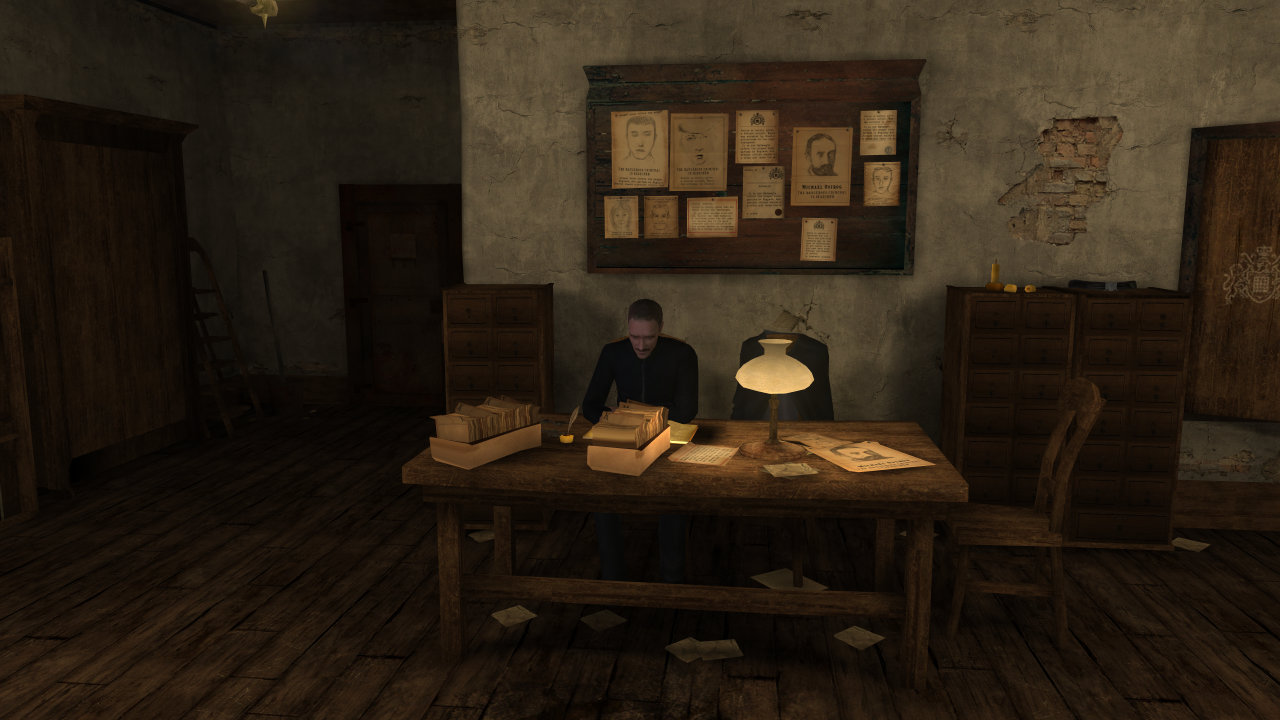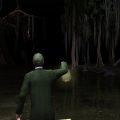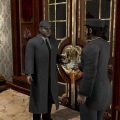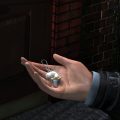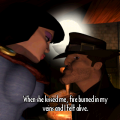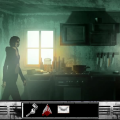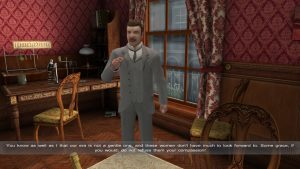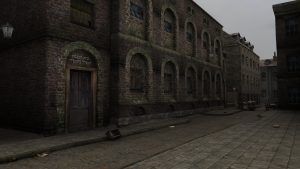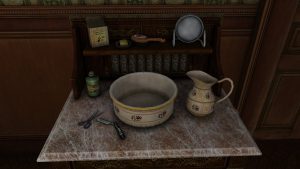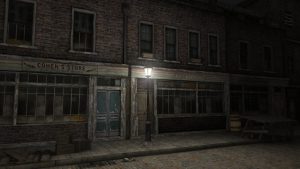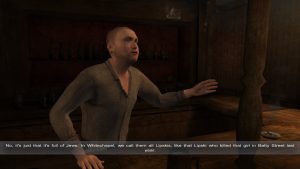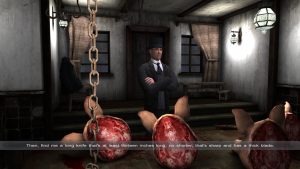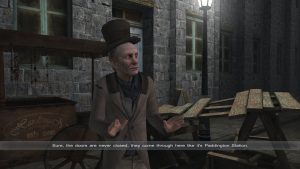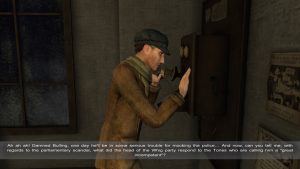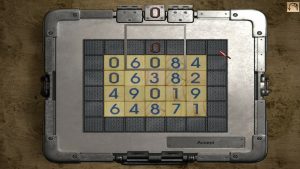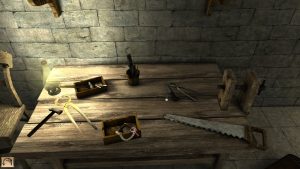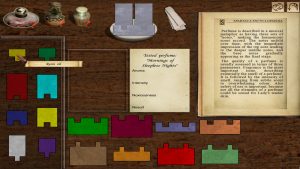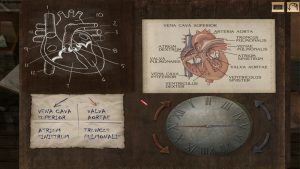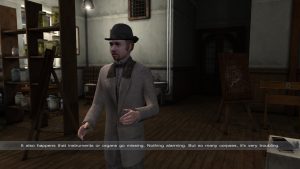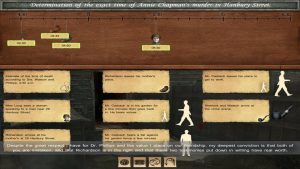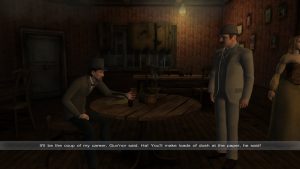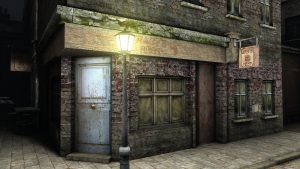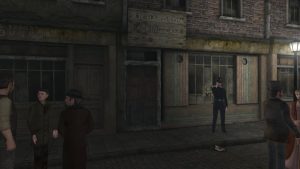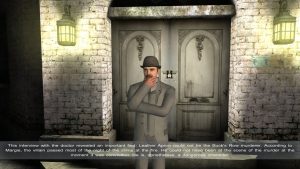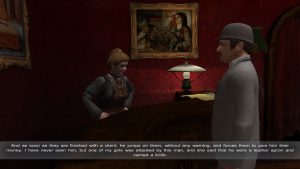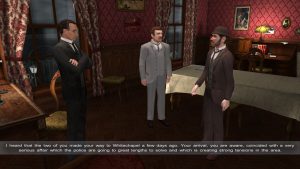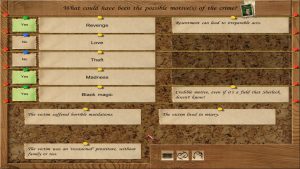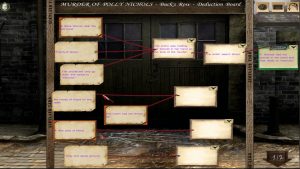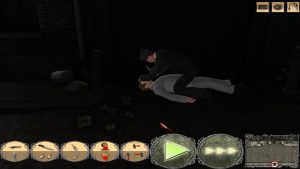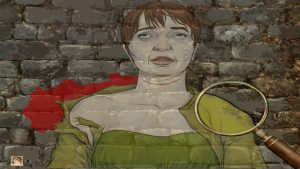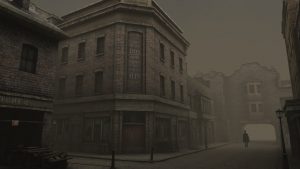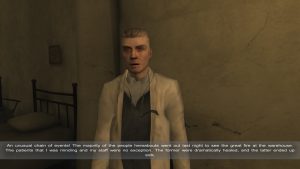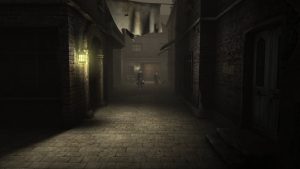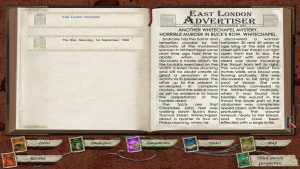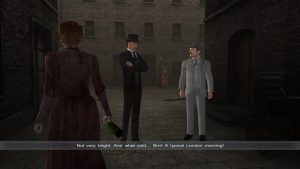- Sherlock Holmes: The Mystery of the Mummy
- Sherlock Holmes: Secret of the Silver Earring
- Sherlock Holmes: The Awakened (2006)
- Sherlock Holmes: Nemesis
- Frogwares’ Sherlock Holmes Casual Games
- Sherlock Holmes Versus Jack the Ripper
- Testament of Sherlock Holmes, The
- Sherlock Holmes: Crimes & Punishments
- Sherlock Holmes: The Devil’s Daughter
- Sherlock Holmes: Chapter One
- Sherlock Holmes: The Awakened (2023)
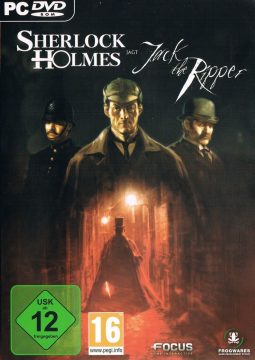
German Box Art
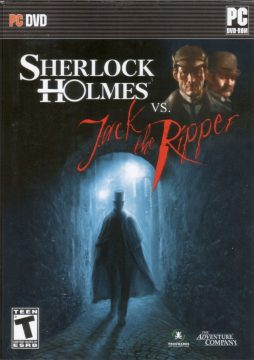
US Box Art
Sherlock Holmes Versus Jack the Ripper is the last of Frogwares’ little crossover trilogy, and possibly the strongest of them all yet. After the gimmicks of the last two mainline games, the team went back to basics, and found flavor in the subject matter of one of the world’s most famous serial killers. While this could have been an exploitative mess, the subject matter is handled much better than you’d expect, resulting in an interesting piece of historical fiction that also works as a strong Sherlock Holmes story with a darker edge to it. Just be warned, while the violence in The Awakened was somewhat goofy or unbelievable, that isn’t the case here. Just be glad that they didn’t show the most grisly details.
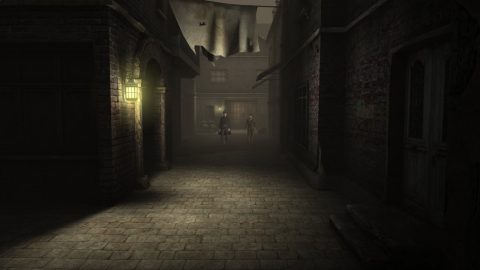
The game is set earliest in the timeline so far to match up with the time of the real world murders, with Holmes in a funk and smoking while thinking about the fragility of life. We then cut to a first person perspective of someone who strangles a prostitute to death, as we hear stabbing below (which is thankfully not shown). Homes and Watson visit the slum of Whitechapel to look into it and quickly become involved in the background, Holmes particularly invested in stopping the killer.
The team certainly did their research, with the cast being filled with people who were around during the murders, and many testimonies you get from the police being from actual witnesses. Even developments in the case match up with reality more often then not, and are used to form a strong mystery as to who Jack the Ripper really is. It gives the game a different feel than previous ones, using the reality of the scenario and setting to its advantage instead of relying on pulp story tropes. It makes the game stand out among the rest of the franchise.
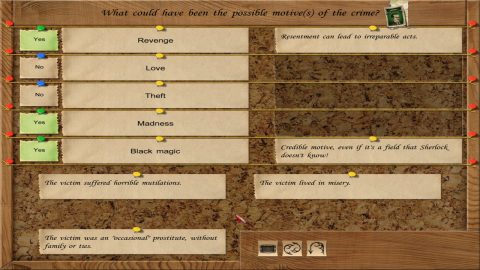
Granted, a lot of that pulp is still there. Original characters and events still pop up, like a side plot revolving around kittens, Holmes’ “secret police,” and cat nip. The hammy acting of the era for this series also makes everyone feel a tad over the top at least and cartoonish at the most. A very real journalist who played a central role in the myth of Jack the Ripper is played so hammy and theatrical that if you didn’t know about him before, you wouldn’t have guessed him based on a real person.
Thankfully, the game mostly avoids this with Jack the Ripper, outside a single creepy voice line that works well enough. The only other time he would have had a chance to talk, the game goes in a more artsy, experimental route that makes for a more memorable and haunting scene that doesn’t disrespect the myth with late 2000s video game voice acting. It really shows just how Frogwares were trying to do more than just make another point and click adventure, a bit of extra effort they didn’t have to do, but went for to make the story hit stronger.
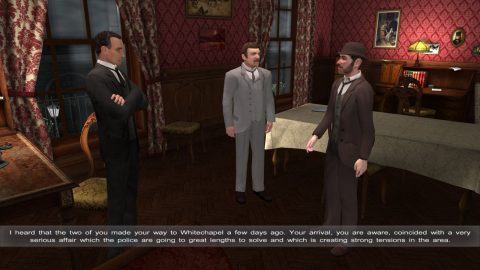
Like the other crossover games, the focus is on putting Holmes in a scenario and seeing what happens. The end result is a Jack the Ripper story with a slight bit more levity, as Holmes and Watson carry some humor with them between murder investigations (just wait until Holmes gets the idea to test out knives to see what the killer would have used). A lot of the story follows them trying to divert police away from red herrings, or chasing various possible leads as the murders unfold over time.
This means we do have downtime between the really nasty stuff, and sometimes that humor is used to take some of the sting out. This does make the moments where things get really grim hit harder, especially when one moment manages to actually briefly break Holmes, and rightfully so. His actor has trouble selling his lines, though, so his brief breakdown reads a bit more comedic then was probably planned, though only a bit. The direction of the scene and score does some further lifting to make up for it.
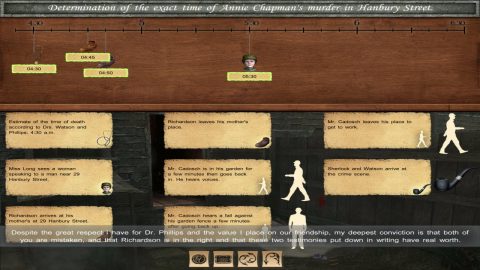
The game and its story is overall impressive, helped along by some great new additions to the investigation formula. Unlike the absurdly dense Silver Earring, this game has a properly paced mystery with dead end lines of investigation slowly working themselves in and out of the story. There are also bits where you get to do investigation minigames and puzzles, like laying out a timeline or re-enacting a murder. This makes it easier to keep track of important information, backed further by an improved deduction board that lets you make guesses and lead your trail of thought to important points. It’s a nice touch that makes get into Holmes and Watson’s mind space a bit, something later entries would focus on more.
What’s really appreciated, though, is that the game doesn’t run away from difficult subject matter. The game discusses sexually transmitted diseases, antisemitism, the struggles of the lives of prostitutes, and more, and handles it all fairly well (if in a bit of a campy, pulpy manner the series had become used to). It’s a refreshing change after they darted away from similar subjects during The Awakened, and these themes even play into finding out who the killer is. It’s not prestige TV or a high end drama, but there’s more thought here then you’d normally expect, and it fits well to expand on Holmes’ softer side.
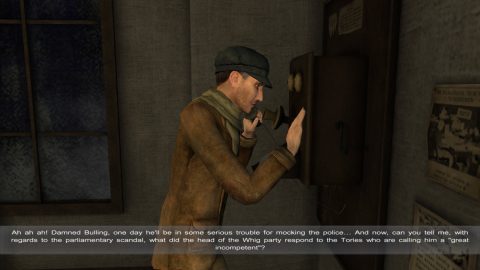
The one iffy dramatic bit revolves around a homosexual doctor named Tumblety, but it turns out they were just being true to life (though they never brought up that he knew an accomplice of John Wilks Booth, missed opportunity). As for comedy, there is an unfortunate trend of fatphobia through these games, and we get introduced to the series worst offender here with Danny, an overweight prostitute. She, unfortunately, has story time in Testament as well. She also sort of undercuts the otherwise well intentioned handling of sex work in the story. Thankfully, her appearances here are few, and she disappears as the case really gets going.
All of this said, there is a feeling here that the team was starting to reach the end of what they could do with this current formula of gameplay and world design. Their tech was definitely getting long in the tooth, even in the more polished re-release versions played for this series. This came out in 2009, and the character models and a few other assists look like they would be at home on the original Xbox, even with remaster touches. It doesn’t diminish what this game accomplishes, but you can see the spots where the limits of the tech was inhibiting the team’s ambitions.
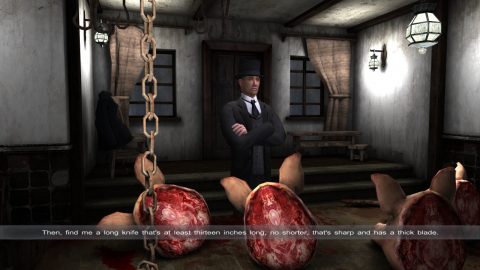
The limited character animations were even more archaic than the original Mass Effect from two years before, and the sound design was just…odd. Characters crying or screaming rarely looked convincing, not helped by odd samples being too short and appearing to be stock sounds at points (possibly actual line readings but with poor scene direction). There was also an issue of clipping here and there, like the opening scene of Jack’s first known murder having his hand go into a nearby wall and fail to wrap around the victim without the neck sort of coming out. The game has mood for ages just from texture work, but things tended to get awkward when character models were on display.
The core strengths of the game let it shine past these shortcomings, but we were well into the seventh gen of consoles at this point. For the next release, Frogwares needed to change how to do things, and they understood the demand was there from their fans. So, while they continued the casual game side hustle, their original plans for the sixth mainline entry were pushed back from 2010 to 2012, with new technology and everything to make a larger, more flashy adventure.
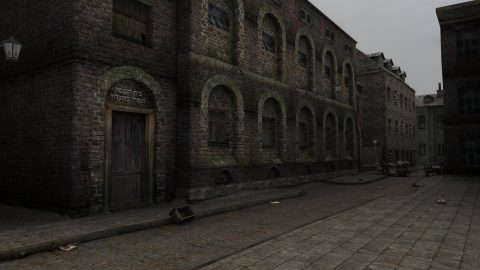
When 2012 hit, the series finally entered the HD era proper, and while it entered with some technical hiccups, it made quite the impression and made clear that Frogwares were much more than a B-game studio to a growing audience.
